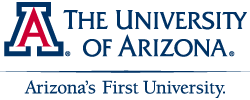Test Beam Work at IHEP in Protvino 2006 - 2007
It it proposed to upgrade the luminosity of the Large Hadron Collider (LHC) sometime in the next decade by about a factor ten. The design luminosity of 1034 cm-2 s-1 is already rather high compared to most experience. The proposed large increase requires that the experiments evaluate the capability of the detector elements to see if they will work well, or even survive, in the harsh radiation environment.
The ATLAS liquid argon calorimeters are expected to operate with only modest degradation in performance over most of the coverage. But at small angles to the beams the detectors will face a difficult challenge.
To probe the limits of operation of the ATLAS forward calorimeter (FCAL), ElectroMagnetic End Cap (EMEC), and Hadronic End Cap (HEC) calorimeters, small sections of each were built as faithful reproductions of the detectors in ATLAS. These are just a few centimeters long on each edge. Each is in a separate cryostat in an intense 60 GeV proton beam at the IHEP accelerator at Protvino, Russia south of Moscow by a few hours drive.
The goal of the test is to measure the pulses from each module. Intensities can be varied from a few to a few hundred thousand protons per r.f. bunch. The bunches are tight enough (15 ns fwhm) that several protons will look like one hadronic shower and separated by enough (1000 ns) that the calorimeter pulses won’t overlap. Predictions for all three modules for heating, temperature rise, HV current draw, rates relative to the LHC, initial current on triangle pulse, and pulse height in ADC counts will be tested.
Each cryostat contains a purity monitor. If, under the extreme radiation, some material poisons the liquid argon, then the offending module will be determined.
The FCal module is dubbed the FCalchik, a Russian diminutive of the FCal.
The first beam run is scheduled for the Spring of 2007 followed by a second run in the Fall, but only if the accelerator operates as planned. Budget problems may limit the number of runs to one per year, in which event the first run will be in the Fall of 2007.
|



![]() Experimental Elementary Particle Physics Departmental Telephone: (520) 626-9677
Experimental Elementary Particle Physics Departmental Telephone: (520) 626-9677